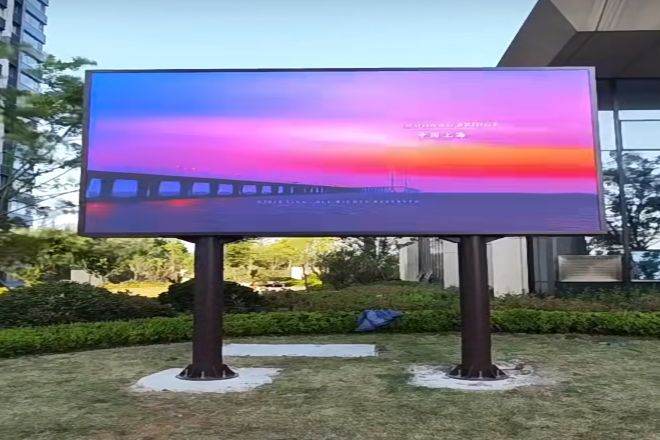介绍
1、LED显示屏亮度、对比度不足
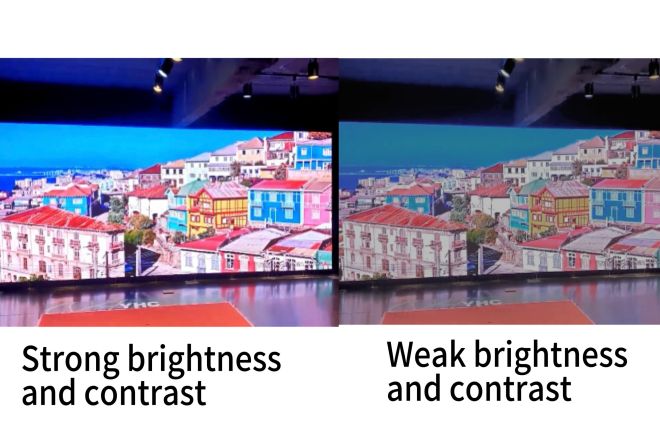
当LED显示屏亮度不足时 亮度 和对比度不足的话,整个屏幕的画面就会显得暗淡,色彩不够鲜艳,图像的亮部和暗部区分不明显,导致画面模糊。
在这种情况下,即使是高分辨率的内容也可能因为细节的损失而难以辨认,尤其是在强光环境下,屏幕上的内容几乎看不清。这样的显示效果会大大降低观众的观看体验,使信息传达变得困难。
针对LED显示屏亮度、对比度不足的问题,可以采取以下策略进行改善和优化:
1). 提高光源质量
选择优质的LED芯片:选购LED显示屏时,优先选择知名品牌、高光效的LED芯片,这样的芯片通常稳定性更好,使用寿命更长。
定期维护更换:建立定期维护计划,及时更换老化的LED灯珠,避免影响整体亮度。同时定期检查电路连接情况,确保每颗LED灯珠都能正常发光。
2).完善控制系统
优化亮度、对比度调节功能:升级或更新显示屏控制系统,确保其具备完善的亮度、对比度调节功能。通过软件算法实现更精细化的调节,满足不同应用场景的需求。
专业培训与设置:为操作人员提供专业培训,确保其能够正确设置和使用亮度、对比度调节功能。同时,根据实际应用场景提前进行预设,避免因设置不当导致显示效果不佳。
3). 综合解决方案
综合评估选择:购买LED显示屏前,要综合评估应用场景、环境光照条件、观看距离等因素,选择合适的显示屏型号和配置。
系统集成与调试:显示屏安装完毕后,进行系统集成和整体调试,确保各个部件协同工作,达到最佳的显示效果。
持续监控与优化:在使用过程中,对显示器的亮度、对比度、色彩还原度等性能指标进行持续监控,并根据需要进行优化和调整,确保显示器始终保持良好的显示效果。
2.LED显示屏色彩还原度差
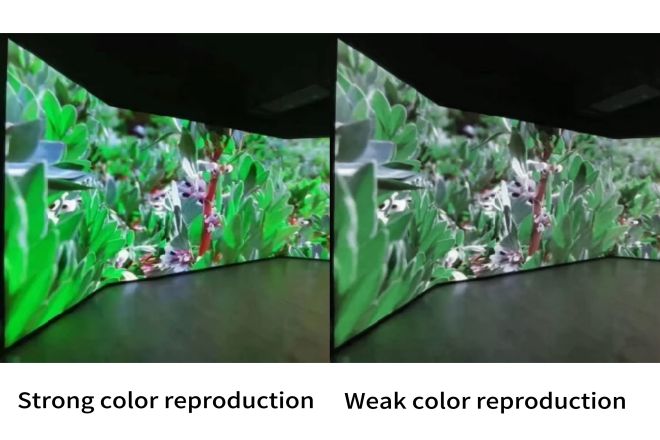
如果LED显示屏的色彩还原度较差,那么在显示画面时,屏幕上的色彩就会与原始图像的色彩有明显的差异,具体表现为色彩过亮或过暗、色调偏暖或偏冷、色彩饱和度不足或过饱和等。
这种色彩偏差会导致图像看起来不自然,失去原有的色彩层次和细节,影响观众的视觉体验。
特别是在艺术展览、影视播放等对色彩呈现要求准确的场景下,色彩还原差的问题会更加突出,严重影响显示效果。
针对LED显示屏色彩还原度差的问题,可以从以下几个方面进行改进和优化:
- 合理设计像素间距:
根据应用场景和观看距离选择合适的像素间距。近距离观看时,应选择像素间距较小的显示屏,以提高色彩细腻度;远距离观看时,可以适当增加像素间距,以降低成本。
- 动态调整观看体验:
在某些场合,例如展览会或者广告牌,可以考虑设置多个观看区域,并采用不同的显示屏或显示技术,以满足不同距离观看者的需求。
2). 提高色彩深度和灰度
- 升级显示技术:
使用色深和灰度更高的LED芯片,支持更丰富的色彩和更细腻的画面。这通常需要更先进的生产工艺和更高的成本投入。
- 数据处理优化:
优化显示系统软件层面,通过算法提升色彩还原和细节表达能力。例如,可以采用先进的颜色插值算法来填充像素之间的颜色过渡。
- 内容改编:
保证输入到LED显示屏的内容有足够的色深和灰度信息,以充分发挥显示屏的性能。
3). 其他综合措施
- 环境光控制:
控制LED显示屏周围环境的光照条件,减少外界光对显示屏色彩的影响。可以使用遮光罩或调节室内照明来优化观看环境。
- 定期维护:
定期对LED显示屏进行清洁和保养,检查并更换老化的LED灯珠等关键部件,使显示屏保持最佳工作状态。
- 质量监控:
建立完整的质量监控体系,严格控制生产过程中的每个环节,确保产品符合质量标准和颜色要求。
3、LED显示屏的可视角度有限
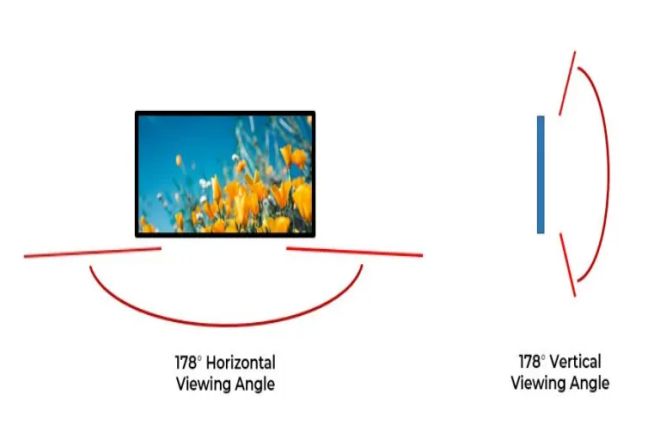
当。。。的时候 可视角度 由于LED显示屏的亮度和色彩质量有限,观众在偏离最佳观看位置后会明显感觉到屏幕上画面的亮度和色彩质量逐渐下降。
具体来说,画面可能会变得暗淡,色彩会扭曲或褪色,细节会变得模糊难以辨认。 尤其是当角度偏离较大时,整个画面可能会变得几乎无法观看,严重影响观众的视觉体验。
因此,在视角有限的LED显示屏前,观众需要尽量停留在最佳观看位置,才能获得最佳的视觉效果。
LED显示屏可视角度受限的问题可以从以下几个方面进行解决和优化:
1). 提升LED封装技术
- 采用广视角包装技术:
选择采用广视角封装技术的LED显示屏。
这些屏幕在设计制造时就考虑到了光散射的角度,能够在水平和垂直方向上提供更大的视角,减少观众偏离最佳视角时亮度和色彩的衰减。
- 优化包装结构:
通过改进LED的封装结构,例如采用特殊的透镜设计或者表面处理技术,可以增大光线的散射角度,提高显示屏的视角范围。
2).合理设计屏幕曲率
- 采用弧形设计:
根据具体的应用场景和受众分布,可以合理设计LED显示屏的曲率,曲面屏能够更好地适应人眼的视觉习惯,提供更宽的视角和更舒适的观看体验。
- 定制设计:
针对特定的应用场景,例如剧院、体育场馆等,可以根据观众座位的分布和形状进行定制化设计,调整显示屏的曲率和形状,以达到最佳的观看效果。
3). 减少环境光干扰
- 添加遮阳设施:
在户外应用中,增加遮阳篷、遮阳网等遮光设施,减少阳光直射对显示屏的干扰。这些设施不仅可以减少屏幕表面的反射光,还可以提高显示屏的对比度和清晰度。
- 使用防反射材料:
选择具有防反射性能的屏幕材料,减少环境光在屏幕表面的反射,提高显示屏的视角和清晰度。
4). 其他综合措施
- 优化像素排列和间距:
通过精细的像素排列和合理的像素间距设置,可以保证画面在不同角度观看时都能保持清晰度和细节表现力。避免使用过大的像素间距,以减少颗粒感对视觉的冲击。
- 采用先进的图像处理技术:
通过图像处理算法对图像进行优化,增强图片的对比度和色彩饱和度,使图片在不同角度下呈现出更加鲜艳生动的视觉效果。
- 合理的安装位置及角度调整:
LED显示屏安装时,应根据实际观看需求和现场条件进行合理布局,保证屏幕能够覆盖尽可能多的观众区域。同时,通过调整屏幕的安装角度和倾斜度,可以进一步优化不同角度的观看效果。
4. LED显示屏维护和保养不当
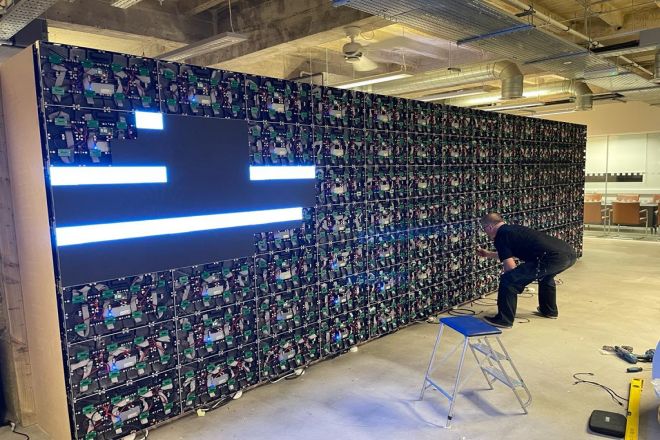
如果LED显示屏没有得到妥善的维护和保养,其显示屏会逐渐出现各种各样的问题,首先,屏幕表面会积聚灰尘和污垢,导致透光率降低,图像暗淡不清晰。
其次,由于散热系统可能出现堵塞或者故障,导致LED灯珠因过热而降低发光效率,进一步影响画面的亮度和色彩表现。
此外,缺乏定期的电气性能检查和结构稳定性维护,可能导致显示屏出现闪烁、黑屏、图像失真等故障,严重影响观看体验。
长此以往,这些问题还可能加速显示屏的老化过程,缩短其使用寿命。因此,正确的维护和保养对于保持良好的显示效果和延长LED显示屏的使用寿命至关重要。
针对LED显示屏维护、保养不当的问题,可以从以下几个方面进行解决和优化:
1). 定期清洁
重要提示:LED显示屏经过长期使用后,屏幕表面会堆积灰尘、污垢,这些杂质会阻碍光线穿透,降低显示效果,还可能加速屏幕的老化。
1.1). 解决策略:
定期清洁计划:制定定期清洁计划,并根据使用环境和频率确定清洁周期。一般建议每月至少清洁一次,对于污染严重的环境中的显示器,清洁频率应更高。
专业清洁方法:使用柔软、不起毛的棉布或不掉毛的纸巾,轻轻蘸取清水(避免使用含有酒精或化学成分的清洁剂),拧干后擦拭显示屏。注意不要挤压或刮伤屏幕表面。
清洁环境:将显示器移到自然光线较好的地方进行清洁,这样可以更清楚地看到灰尘并有效清除。
2).散热系统维护
重要性:LED显示屏工作时会产生大量的热量,如果散热系统出现故障,就会导致LED灯珠温度过高,影响发光效率、缩短寿命,甚至引发安全事故。
2.1). 解决策略:
定期检查散热系统:定期检查散热风扇、散热片等散热部件是否运转正常,清理灰尘、杂物,确保散热通道通畅。
优化散热设计:对于散热性能较差的显示屏,可以考虑增加散热元件、优化散热布局、或采用更高效的散热技术。
控制环境温度:将显示屏放置在通风良好、温度适宜的环境中,避免长时间大功率运行,以减轻散热负担。
3).定期检查和维护
重要性:缺乏定期的电气性能检查、结构稳定性检查、软件更新等维护措施,会导致显示屏性能逐渐下降,最终影响显示效果和使用寿命。
3.1). 解决策略:
制定维护计划:根据显示器的使用情况和制造商的建议,制定详细的维护计划,包括检查内容、周期和方法。
电气性能检查:定期检查显示屏的电源、控制卡、信号线等电气元件是否正常工作,及时发现和修复潜在的故障隐患。
结构稳定性检查:检查显示屏的支架、框架等结构部件是否牢固可靠,防止因结构松动或损坏而引发安全事故。
软件更新:及时关注显示屏的软件更新信息,并按照厂商的指导升级软件,以提高显示屏的性能和稳定性。
结论
综上所述,造成LED显示屏反馈效果不佳的原因主要有亮度和对比度不够、色彩还原度差、可视角度受限、维护保养不当等。
针对这些问题,生产厂家需要在产品设计、生产、安装、后期维护等各个环节加强质量控制和技术创新。
同时,用户还应注意显示屏的合理使用和维护,以充分发挥LED显示屏的优越性能,提高信息传播效率和视觉体验。
最后,如果你想了解更多关于LED显示屏的信息, 请与我们联系。

